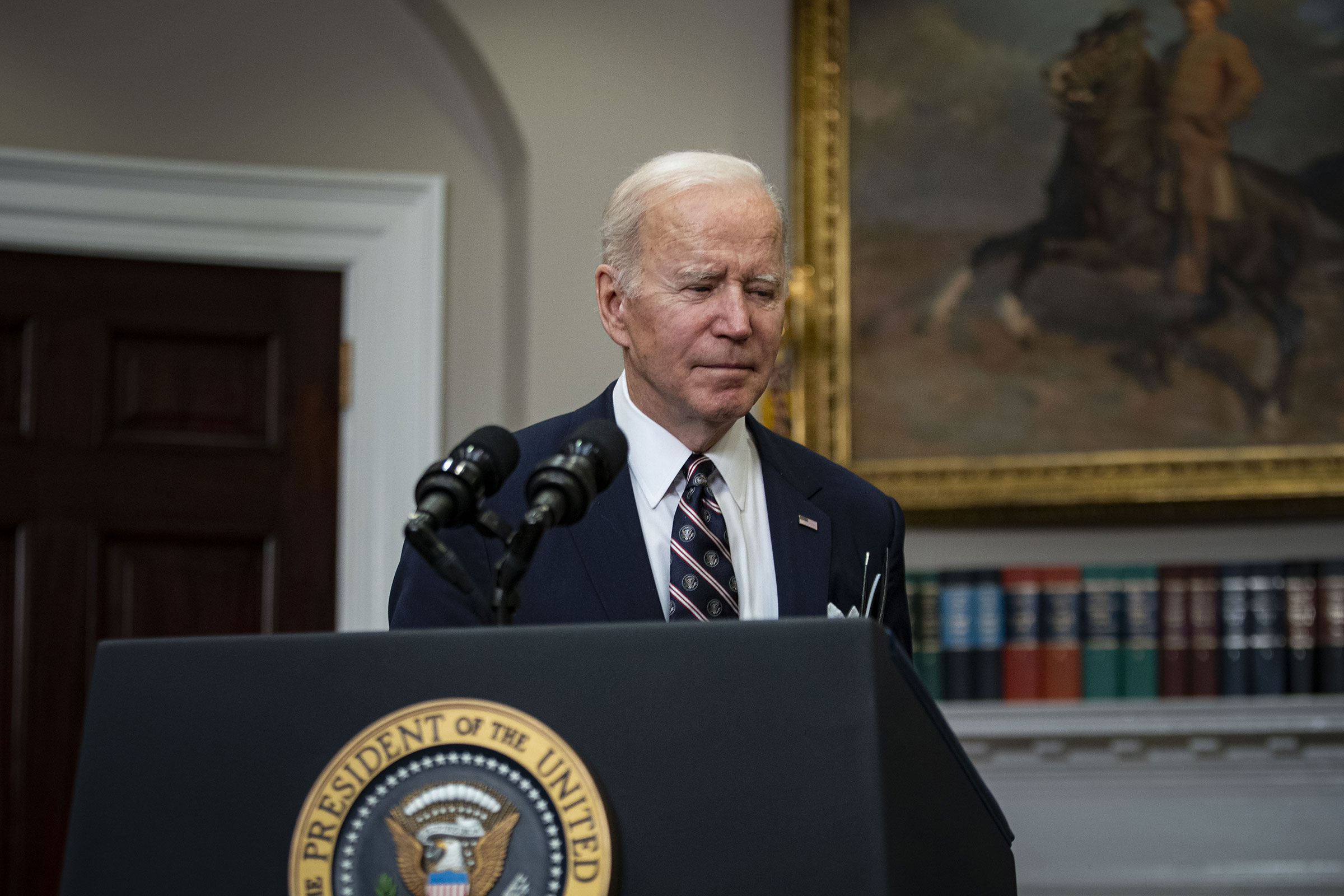
This article is part of the The DC Brief, TIME’s politics newsletter. Sign up here to get stories like this sent to your inbox every weekday.
Joe Biden has been in office a little more than a year so far. And, with few exceptions, he’s been stuck with Donald Trump’s spending plans.
Budget negotiations at the Capitol seem, once again, to be stuck in neutral. The current stopgap spending package expires next Friday, Feb. 18. House Democrats on Monday introduced a three-week extension and on Tuesday were set to pass it, sending it to the Senate and moving the shutdown deadline to March 11. Biden has already signed spending patches in September and December to dodge shutdowns and always seems to find at least 60 votes in the Senate to keep the lights on.
As a practical matter, the new eight-page stopgap measure sustains spending levels put in place under Trump. It severely curbs Biden’s ambitious agenda and even retroactively limits some of the high-profile achievements that he touted as he marked his first year in power. For instance, the National Defense Authorization Act that Biden signed into law in December includes a pay increase to the military—but it’s paid for in the appropriations framework that’s stuck at Trump-era levels. That leaves about $5 billion missing from military families’ accounts, the Defense Department told Congress in January. Either the Pentagon pushes pause on other spending, like construction or purchasing, or short-changes the same folks who are bracing for a possible war with Russia over Ukraine. Neither is a good look.
Both Appropriations Committee Chairman Pat Leahy and its ranking member Richard Shelby are in their last year office, having both decided this would be their last term, so there is less political pressure on the veteran spenders to play politics. For his part, Shelby has said repeatedly he wants to finish work on this current year’s budget, which ends on Oct. 1.
But among rank-and-file Republicans considering their own footing ahead of this fall, keeping Biden boxed-in on his budget has some appeal. The White House shepherded its middle-of-the-road bipartisan infrastructure bill last year but it needs congressional appropriators to OK the cash that’s been approved. Appropriators are also still at odds over a ban on public funds for abortion services, Veterans Affairs and whether defense programs would get the same boost to their budgets as domestic programs are slated to enjoy. Republicans are hesitant to boost non-defense spending at a faster clip than defense spending.
If this last-minute wrangling over the basic function of government feels routine, there’s a reason. The last time Congress finished work on a budget before the clock ticked into the new fiscal year was in 1996. In twenty-six years since, Congress has never passed more than a third of its regular appropriations bills on time, according to one Pew study. Writing as the last fiscal year was starting, one wonk noted that “in 17 out of the last 46 years, the fiscal year has started with zero appropriations bills completed.”
Zero. And as Biden is poised to close out the first half of his first full budget year on April 1 still largely beholden to Trump-era spending priorities, it’s worth remembering this: In Washington, sometimes inaction is an action that is intentional.
Make sense of what matters in Washington. Sign up for the daily D.C. Brief newsletter.
More Must-Reads from TIME
- Donald Trump Is TIME's 2024 Person of the Year
- Why We Chose Trump as Person of the Year
- Is Intermittent Fasting Good or Bad for You?
- The 100 Must-Read Books of 2024
- The 20 Best Christmas TV Episodes
- Column: If Optimism Feels Ridiculous Now, Try Hope
- The Future of Climate Action Is Trade Policy
- Merle Bombardieri Is Helping People Make the Baby Decision
Write to Philip Elliott at philip.elliott@time.com